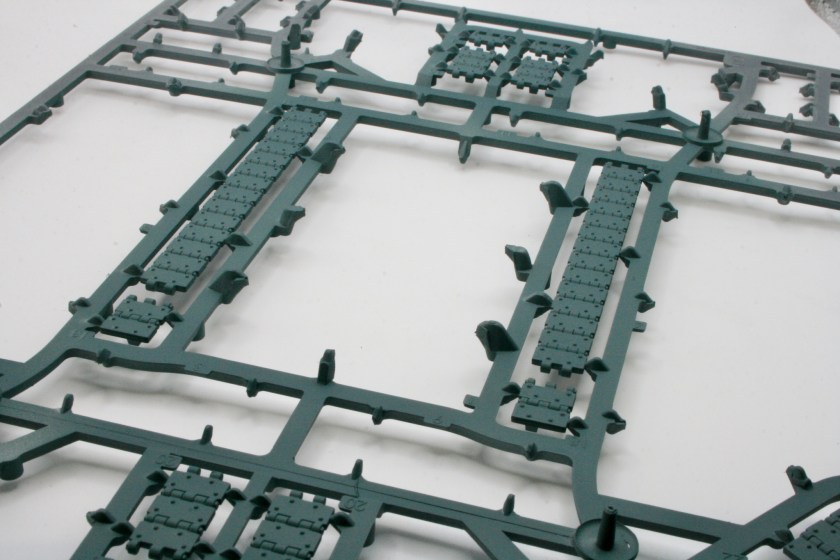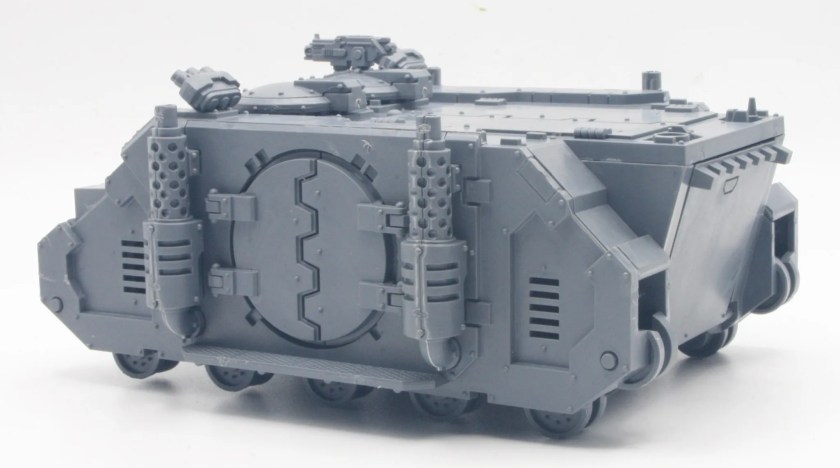The Rhino is the most widely used armoured personnel carrier in the Imperium. Based on ancient STC technology, the fundamental design is robust, reliable, and easy to maintain, with an adaptive power plant that can run off a wide variety of fuels.
I bought the plastic Deimos Pattern Rhino when it came out in the summer, you can see the workbench for that Rhino here. I was lucky enough to get a second Rhino for a Christmas present. The model has many more parts and is a more detailed kit than the original plastic Rhino kit that came out in the 1980s. I constructed the model to the instructions, though I left the tracks off to paint separately. I gave the model an undercoat of Citadel White Scar. I gave the model a couple of light coats of Daemonic Yellow. I also painted the bolter and exhausts with Leadbelcher. I then shaded the model. For the next stage I used some Citadel Layer Yriel Yellow. I took a large brush and gave the model, what I would call, a heavy drybrush. I then did some more drybrushing.
The next stage was to affix the tracks to the Rhino.
With the tracks for the Rhino I gave them a spray of Mechanicus Standard Grey, this was followed by a heavy drybrush of Gorthor Brown. The tracks, once dry, had a wash of Agrax Earthshade Shade. After painting and shading them, I drybrushed them lightly, first with Leadbelcher. I then did a very light drybrush with Terminatus Stone.
The tracks were removed from the sprue and using superglue they were attached to the Rhino.
You have to be careful when attaching these, as they are specific to each side of the Rhino, but they do attach to the Rhino quite easily.





























